Paul and Sharon LaBrie live in West Gardiner, a rural community 10 miles to the southwest of Augusta, Maine, and while they are 25 miles inland from the state’s south-central coast, they don’t lack for access to the water. Their 7-acre lot borders Cobbosseecontee Stream, a gently flowing tributary of the Kennebec River. The couple have always shared a love of paddling. In 1976 they celebrated their first anniversary with an overnight canoe trip on Maine’s Narraguagus River. A short time later they bought a Grumman canoe—their first boat—and matching paddles, and throughout their nearly half-century of married life they have continued boating and camping together.
In 2005, Paul took an early retirement from a 21-year-long career in academic technology management, and established LaBrie Small Craft, a hobby business devoted to building and restoring boats. Among the boats he built were two reviewed in Small Boats: L. Francis Herreshoff’s CARPENTER and the E.M. White Guide Canoe. He and Sharon also joined forces for several years to do custom work for Island Falls Canoe/Old Town Canoe when customers ordered wooden canoes covered with fiberglass rather than canvas.
About eight years ago, Paul had designed a peapod and before he began construction, he and Sharon had a difference of opinion, the kind that can push even a long, happy marriage to the brink: strip-built or lapstrake. Paul had a number of good reasons to go with strip-built: “Twisting a slim 1/4″ cedar strip, as it leaves the flat bottom and makes a 90-degree twist to the ends of the boat, is easier than torturing a long piece of plywood. Strip-planked bottoms lend themselves better than lapstrake to various coverings like Dynel and a mix of carbon powder and epoxy—just the thing for the ledge and rough landings we often encounter here in Maine. Lapstrake-hull bottoms don’t lend themselves as well to ’glass coverings. And a ‘clean’ bottom, sans seams, is probably a more efficient one, especially for small, human-powered craft.” On the other hand, Sharon likes the look of lapstrake.
Their difference might have led to strife, but even the ancients could point the way to restore harmony to a marriage in such dire straits: De gustibus non disputandum est. Literally translated from Latin, that’s “Of taste there is no disputing.” Any effort to address matters of the heart with reason is as destined to fail as mixing oil and water.
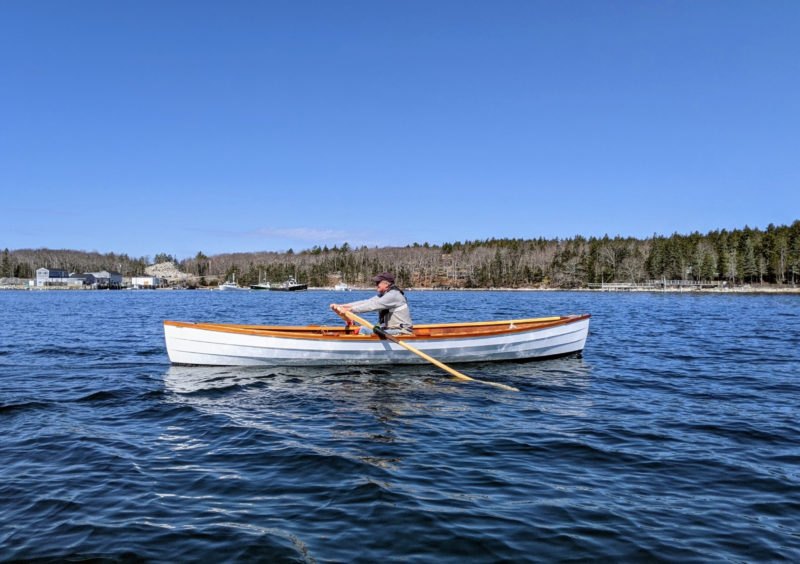 Christophe Matson
Christophe MatsonHere Paul is rowing KESÄ during the 2021 Downeast TSCA early spring gathering at Tenants Harbor in Maine. This event was hosted by Small Boats contributor Ben Fuller. KESÄ is primarily a rowing boat but has a 40 sq ft downwind rig and rudder but no centerboard. She is a veteran of many Small Reach Regattas, among other adventures.
Paul and Sharon didn’t need try to sway one another; they could meet each other halfway, at the waterline. Paul would strip-build the bottom to give it every technological advantage, and from the waterline up, the peapod would be lapstrake with the laps and their shadows highlighting the hull’s curves. Christened KESÄ (Finnish for “summer”), the peapod quickly became their favorite, the “go-to boat” for coastal cruises, including many Small Reach Regattas.
In the past five years, the LaBries have devoted much of their time to building their net-zero home in West Gardiner and maintaining a 25-tree orchard growing heritage Maine apples. With the Cobbosseecontee Stream flowing past their front yard, they wanted to have two easily carried double-paddle canoes that they could launch on a whim. They settled on Iain Oughtred’s Wee Rob, and last winter Paul began work on the first of the two canoes. While the plans specify glued lapstrake construction, Paul used the method he developed during the construction of the peapod.
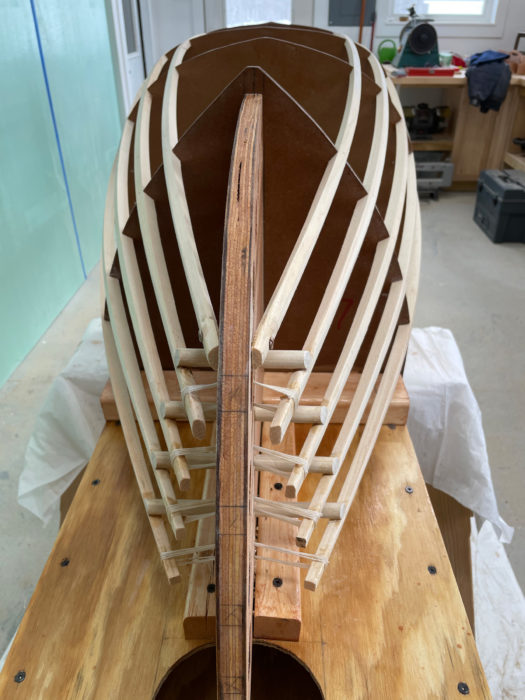 Paul LaBrie
Paul LaBrieAfter KESÄ had proved the concept of using strip planking below the waterline and lapstrake planking above, Paul began work on the first of two Wee Robb canoes. The building form is based on the one described by Tom Hill in his book, Ultralight Boatbuilding.
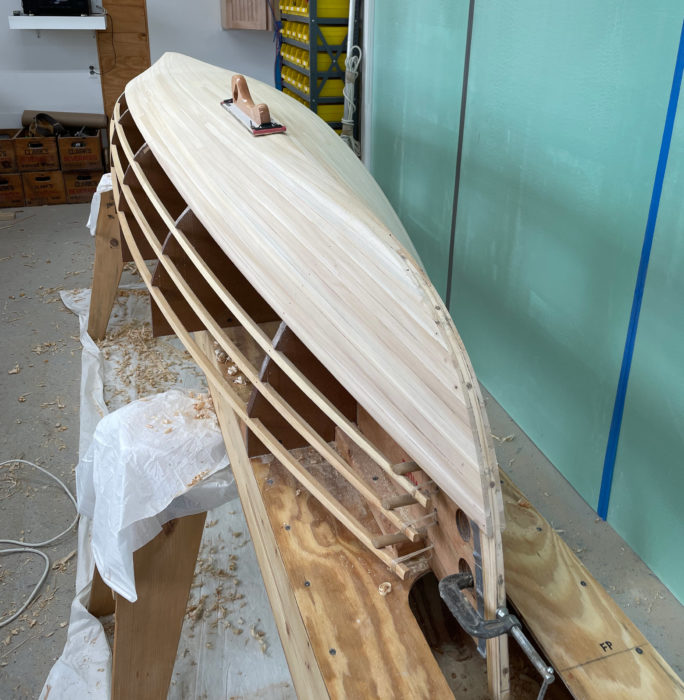 Paul LaBrie
Paul LaBriePaul milled the 1/4” strips for the bottom from locally sourced northern white cedar.
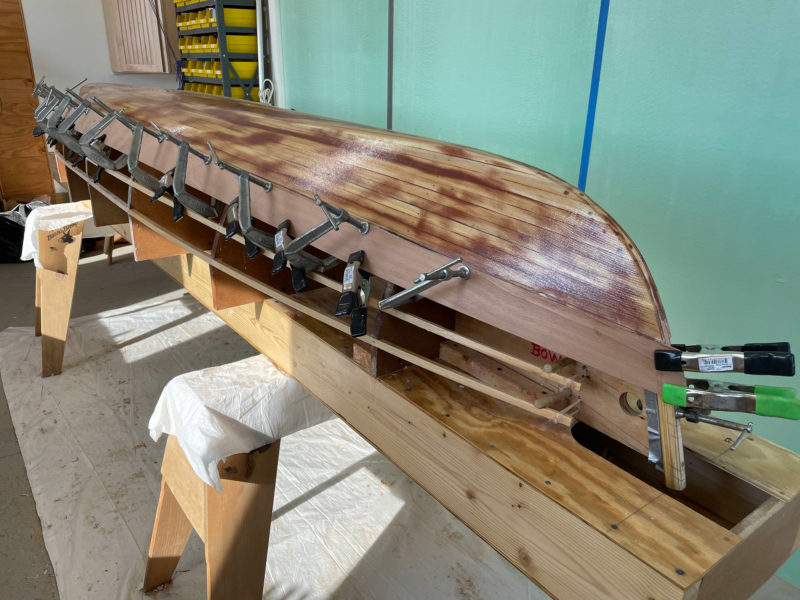 Paul LaBrie
Paul LaBrieAfter the strip-built bottom was ’glassed, the first of the 3mm okoume plywood strakes went on.
 Paul LaBrie
Paul LaBrieThe bottom is not only uninterrupted by laps, but also well protected with sheathing of fiberglass and epoxy. Three strakes of glued-lap plywood finish the hull.
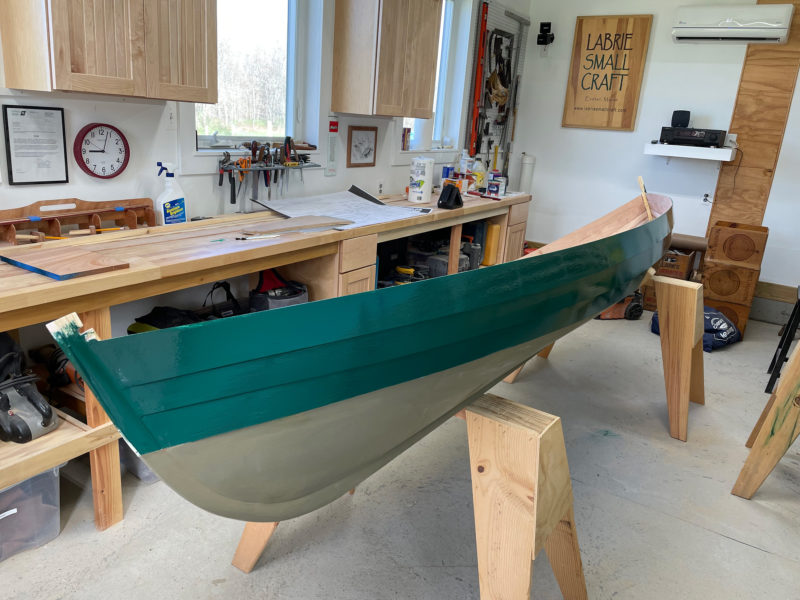 Paul LaBrie
Paul LaBrieThe three plywood strakes will be fully visible above the waterline. The bits of the strip-built hull that will also show will easily be taken to be a fourth strake, completing the illusion of a fully lapstraked hull.
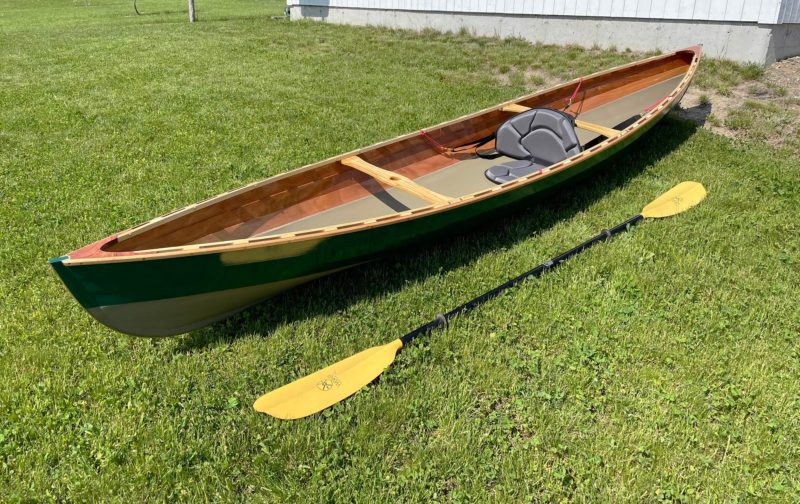 Paul LaBrie
Paul LaBrieThe canoe was finished with inwales of locally-sourced spruce and outwales of red oak. The thwarts are also spruce; the forward has a hole in it and serves as a mast partner. The seat is designed for sit-on-top kayaks. The 230 cm kayak paddle, seen here at launch day, turned out to be a bit too short.
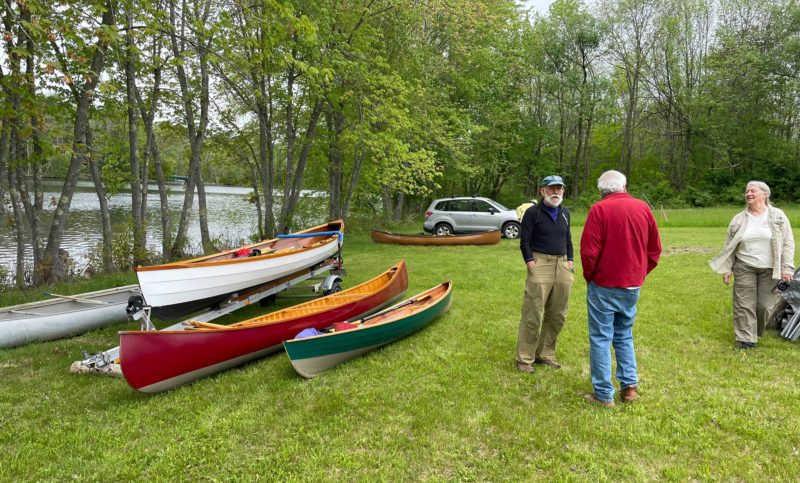 Paul LaBrie
Paul LaBrieTo the left is part of the LaBrie boat collection, with their original 18′ Grumman canoe, KESÄ, a 18′ E.M. White guide canoe, and the newly launched Wee Robb. The setting is the LaBrie waterfront on Cobbosseecontee Stream and the occasion is their annual Cobbosseecontee Stream Downeast TSCA gathering, usually held in late May. The man in the black shirt is Ben Fuller, David Wyman is in the red shirt, and at right is Hildy Danforth.
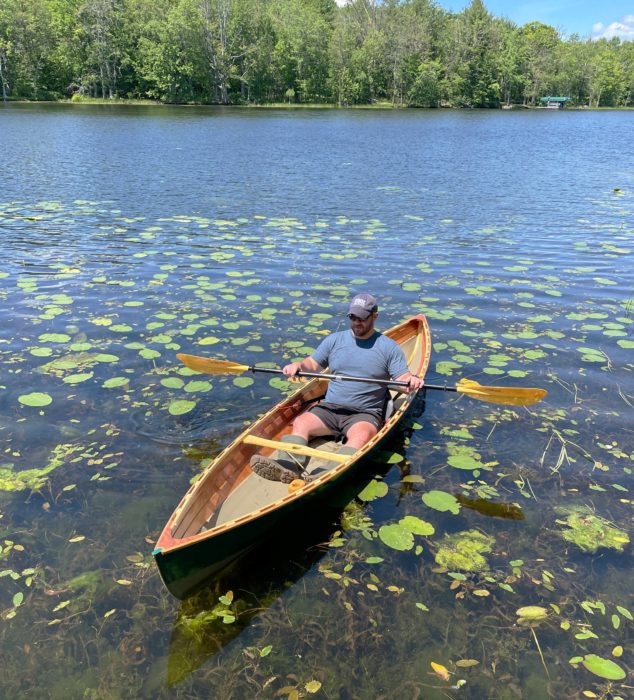 Paul LaBrie
Paul LaBrieThe LaBrie’s son, Jonathan, after launching from their dock on Cobbosseecontee Stream. Jonathan loves the canoe and has asked his parents to build him one.
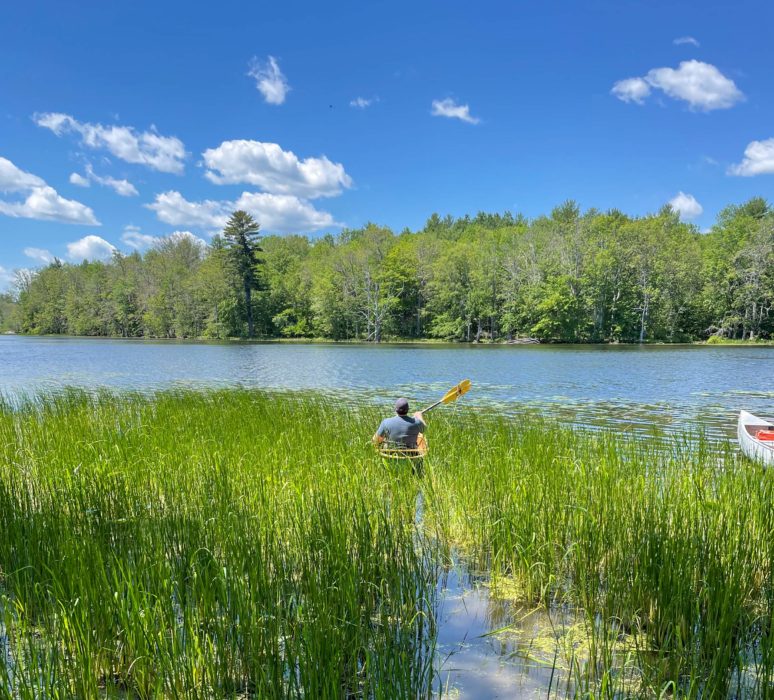 Paul LaBrie
Paul LaBrieJonathan paddled the Wee Robb out through some shoreline reeds to the open wasters of the Cobbosseecontee.
Of course, Paul could have built a lapstrake version for Sharon and a strip-built for himself, but he and Sharon wouldn’t be paddling toward a fiftieth anniversary if they didn’t believe that when two hulls—or two people—are joined together, the whole can be greater than the sum of its parts.![]()
Correction: The photograph of Paul rowing KESA was initially credited in error. The shot was taken by Christophe Matson and the credit has beed corrected above. We apologize for error. —Ed.
Do you have a boat with an interesting story? Please email us. We’d like to hear about it and share it with other Small Boats Magazine readers.
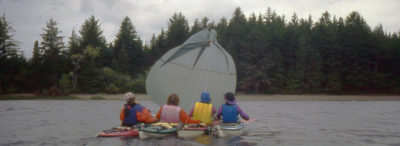
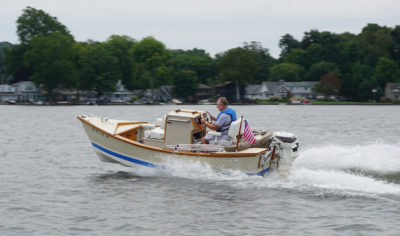
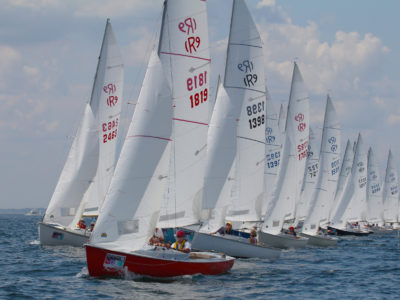
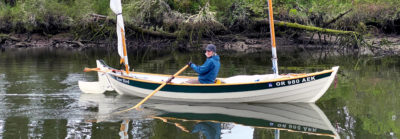
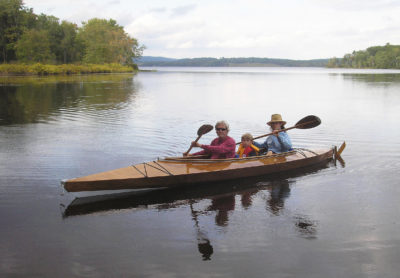
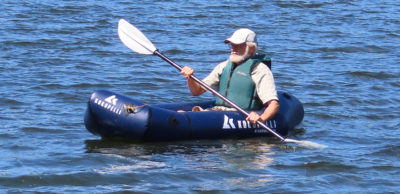
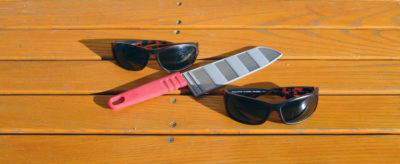
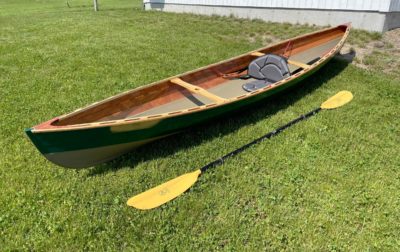
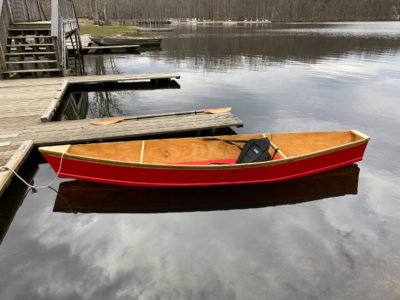
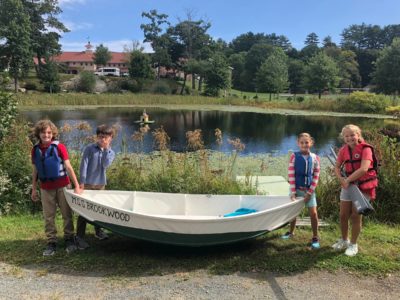
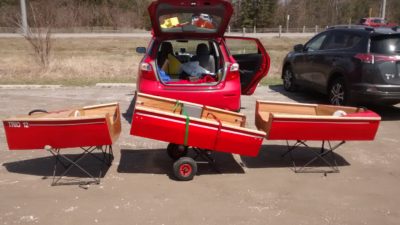
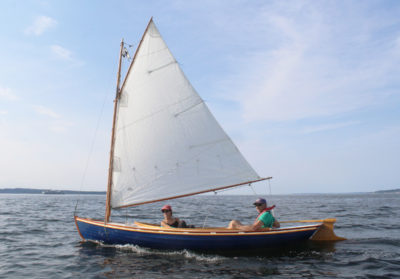
Great writing! More from this author please!
Thanks very much, Adam. The Reader Built Boat features are done in house, working from notes provided by the builders, and I’ve written all of them so far.
Christopher Cunningham
Editor, Small Boats Magazine